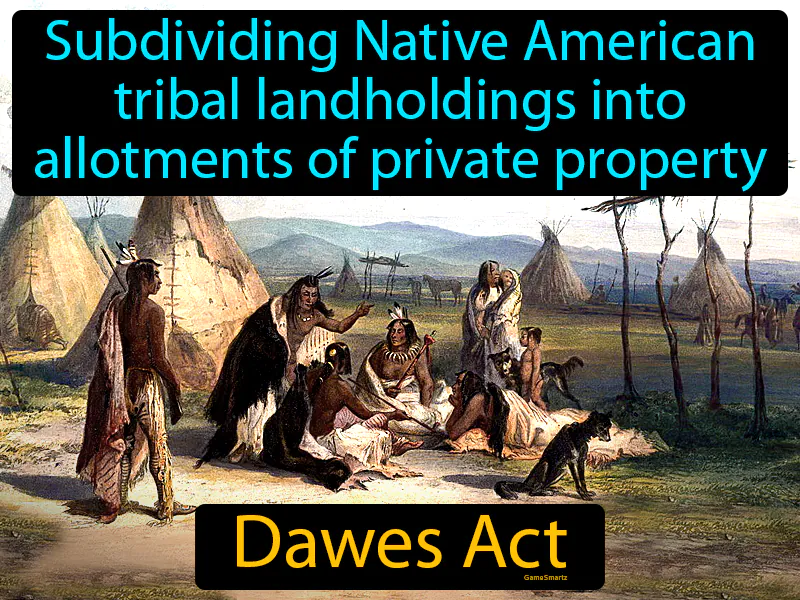Dawes Act
Dawes Act: Easy to understand
The Dawes Act of 1887 was significant because it aimed to assimilate Native Americans into American society by dividing tribal lands into individual plots. This policy was part of the broader context of Western Expansion, where the U.S. government sought to encourage settlement and development of the West. It highlighted tensions between Native American cultural traditions and American policies of assimilation, an issue that remains relevant today as communities strive to maintain cultural identities in a diverse society. The ideas from the Dawes Act impact people now by influencing ongoing discussions about land rights, cultural preservation, and the importance of respecting indigenous traditions. For example, conflicts over land use and the need for culturally sensitive policies are still common in many areas, affecting how communities plan and govern their local environments.

Practice Version

Dawes Act: Subdividing Native American tribal landholdings into allotments of private property. Dawes Act. The Dawes Act was a law passed in 1887 to distribute land to individual Native Americans in an effort to assimilate them into American society.